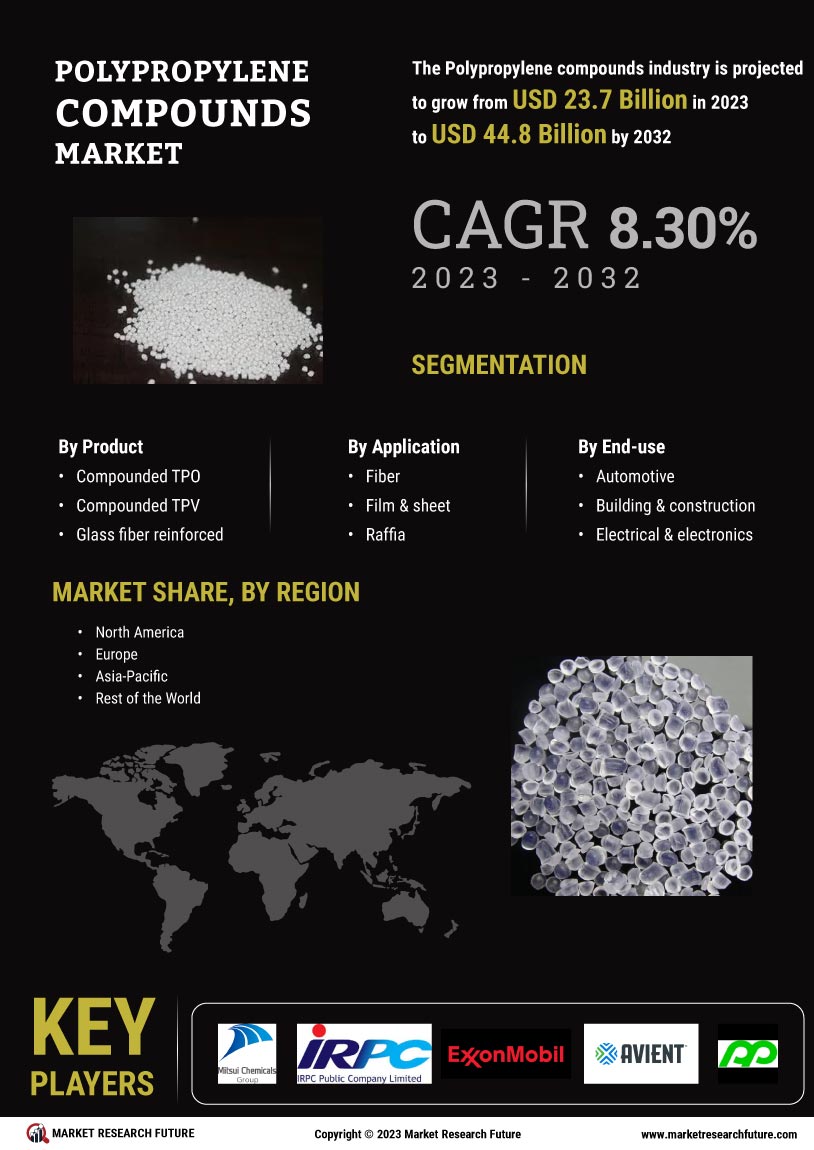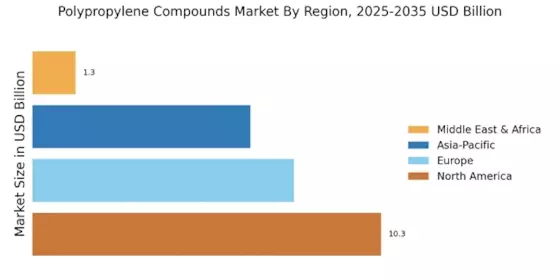Growth in Packaging Applications
The packaging industry is increasingly adopting polypropylene compounds due to their versatility and favorable properties. Polypropylene Compounds Market is experiencing a surge in demand for flexible packaging solutions, which are essential for food safety and product preservation. In 2025, the packaging sector is expected to represent a substantial portion of the polypropylene compounds market, with a projected growth rate of approximately 4.5% per year. This growth is attributed to the rising consumer preference for lightweight and recyclable packaging materials, which align with sustainability goals. Additionally, the ability of polypropylene compounds to be easily molded and customized for various packaging formats enhances their appeal. As a result, manufacturers are likely to invest in polypropylene compounds to meet the evolving needs of the packaging industry.
Increasing Use in Consumer Goods
The consumer goods sector is witnessing a growing trend towards the use of polypropylene compounds, driven by their durability and aesthetic appeal. Polypropylene Compounds Market is benefiting from the rising demand for household products, including storage containers, furniture, and appliances. In 2025, the consumer goods segment is anticipated to contribute significantly to the overall market, with a growth rate estimated at around 5.2% annually. This trend is fueled by changing consumer preferences for lightweight, easy-to-clean, and long-lasting products. Furthermore, the customization capabilities of polypropylene compounds allow manufacturers to create innovative designs that cater to diverse consumer tastes. As a result, the consumer goods sector is likely to continue driving the demand for polypropylene compounds in the coming years.
Rising Demand in Automotive Sector
The automotive sector is experiencing a notable increase in the utilization of polypropylene compounds, driven by the need for lightweight materials that enhance fuel efficiency. Polypropylene Compounds Market is witnessing a shift as manufacturers seek to reduce vehicle weight while maintaining structural integrity. In 2025, the automotive industry is projected to account for a significant share of the polypropylene compounds market, with an estimated growth rate of around 5% annually. This trend is further supported by stringent regulations aimed at reducing emissions, compelling automotive manufacturers to adopt materials that contribute to lower vehicle weights. Consequently, the demand for polypropylene compounds is likely to rise, as they offer a balance of performance and cost-effectiveness, making them an attractive choice for various automotive applications.
Technological Innovations in Production
Technological advancements in the production of polypropylene compounds are playing a crucial role in enhancing their properties and applications. Polypropylene Compounds Market is experiencing innovations that improve processing efficiency and product quality. In 2025, the introduction of advanced manufacturing techniques, such as 3D printing and enhanced compounding processes, is expected to drive market growth. These innovations allow for the creation of tailored polypropylene compounds that meet specific performance requirements, thereby expanding their applicability across various industries. Additionally, the development of new additives and modifiers is likely to enhance the functionality of polypropylene compounds, making them suitable for more demanding applications. Consequently, the ongoing technological innovations are anticipated to significantly influence the polypropylene compounds market in the near future.
Regulatory Support for Sustainable Materials
Regulatory frameworks promoting the use of sustainable materials are increasingly influencing the polypropylene compounds market. Polypropylene Compounds Market is benefiting from government initiatives aimed at reducing plastic waste and encouraging recycling. In 2025, policies that support the use of recyclable and eco-friendly materials are expected to drive demand for polypropylene compounds, which are known for their recyclability. This regulatory support is likely to create opportunities for manufacturers to innovate and develop new products that align with sustainability goals. Furthermore, as consumers become more environmentally conscious, the demand for sustainable packaging and products is expected to rise, further propelling the growth of the polypropylene compounds market. Thus, regulatory support is poised to play a pivotal role in shaping the future landscape of the industry.


















Leave a Comment